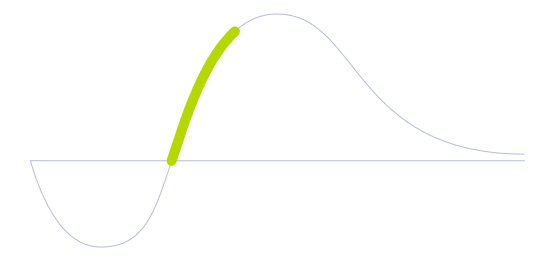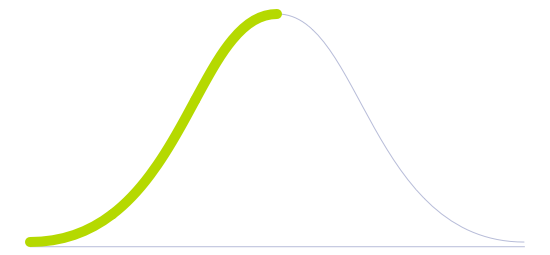Exoskeleton

Technology Life Cycle
Marked by a rapid increase in technology adoption and market expansion. Innovations are refined, production costs decrease, and the technology gains widespread acceptance and use.

Technology Readiness Level (TRL)
Technology is developed and qualified. It is readily available for implementation but the market is not entirely familiar with the technology.

Technology Diffusion
Adopts technologies once they are proven by Early Adopters. They prefer technologies that are well established and reliable.

Powered by a system of electric motors, pneumatics, levers, and hydraulics, this wearable mobile machine allows limb movement while increasing strength and endurance. Exoskeletons are used to compensate for physical and motor deficiencies or aid humans when doing heavy work.
There are two categories of exoskeleton devices: active and passive. The active exoskeletons require motors to aid the user, and the passive ones use artificial muscles and springs to store the energy put out by the user's body movement. New exoskeletons are starting to use softer materials and active clothes, avoiding metal frames and increasing freedom of movement for the wearer.
People that perform repetitive motions or carry heavy objects, such as in manufacturing, construction, and agricultural work, could use this assistive device when performing hazardous tasks to avoid bodily injury, decrease muscular tension and boost productivity and workplace safety. In military applications and rescue operations, this technology could improve mobility and engagement capabilities for soldiers or firefighters on the ground, thus enhancing their effectiveness and reducing mortality.
In the healthcare industry, for instance, exoskeletons could be used for rehabilitation or mobility issues. People with neuromuscular diseases, such as Ehlers–Danlos syndromes (EDS), or even the elderly, could take advantage of this device by mimicking human movement more accurately and maximizing patient effort by providing a rigorous, targeted therapy session. In such cases, the human control of locomotion modes can be inconvenient and cognitively demanding. Therefore, to maximize the benefits of exoskeleton’s assistance, computer vision, and deep learning recognition systems may support the development of automated locomotion techniques to predict different walking environments and adapt between different locomotion modes accordingly.
In gaming, exoskeletons are emerging as commercial devices to exert an opposite and reactive force on the user while using a virtual reality headset. This feature could provide, for instance, the appropriate resistance to make the user feel they are walking, swimming, or carrying heavy objects virtually.
Future Perspectives
Exoskeletons or power-assisted suits could become an essential part of all industries that require manual labor. As soft exo-tech becomes more affordable, it could lead to mass-produced personal mobility machines for everyone. These fashionable, high-tech devices would enable independence, improve overall physical well-being, and could even be recognized as a status symbol, like a car in modern society.
Data collected from humans or even animals equipped with exoskeletons could be used to train an artificially intelligent system that ultimately carries out tasks without the need for a human or animal operator. When coupled with machine-learning algorithms, it could calculate the proper amount of motor assistance to deliver additional resistance to the user at any given moment. The suit could also be tailor-fitted, adjusted to fit the exact needs of each user —from an elderly couple going on a stroll to a firefighter sprinting into a burning building.
Although most of today's solutions work by amplifying muscle movement and using force for haptic feedback, advancements in neuroprosthetics and brain-machine interfaces could soon make it possible to control an exoskeleton directly with thought. Current research efforts show that readings from attached sensors could be fed back to the brain, creating a sensation that the exoskeleton is not a separate entity but part of the body and mind. In other words, designers could extend the nervous system into powerful exoskeletons that humans control and feel with their thoughts.
Image generated by Envisioning using Midjourney